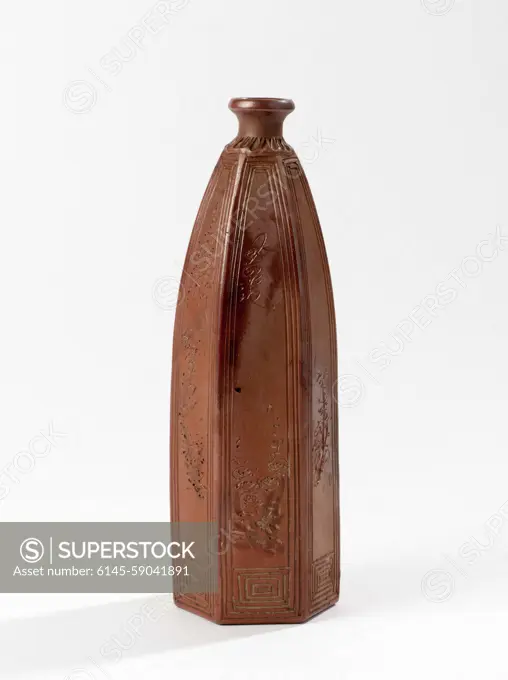Hexagonal bottle (Kado Tokkuri). GRS. Around 1840-1870. Paris, Muse Cernuschi. Pattern of nested rectangular forms; Inscriptions in Japanese characters. This particular shape of Bizen bottle (some are hexagonal, other squares) in a style inspired by Yixing sandstones. This type of bottle was used for the "hōmeishu", a kind of medical elixir whose name means "which keeps alive". Popular from the end of the 16th century in Japan, it would have started to be marketed in the form of Tokkuri manufactured in Bizen from the Kanbun era (1661-1673) (M.M.) Japanese art, hexagonal bottle, Japanese ceramic, gres, kado tokkuri
SuperStock offers millions of photos, videos, and stock assets to creatives around the world. This image of Hexagonal bottle (Kado Tokkuri). GRS. Around 1840-1870. Paris, Muse Cernuschi. Pattern of nested rectangular forms; Inscriptions in Japanese characters. This particular shape of Bizen bottle (some are hexagonal, other squares) in a style inspired by Yixing sandstones. This type of bottle was used for the "hōmeishu", a kind of medical elixir whose name means "which keeps alive". Popular from the end of the 16th century in Japan, it would have started to be marketed in the form of Tokkuri manufactured in Bizen from the Kanbun era (1661-1673) (M.M.) Japanese art, hexagonal bottle, Japanese ceramic, gres, kado tokkuri by Piemags/PL Photography Limited is available for licensing today.
DETAILS
Image Number: 6145-59041891Royalty FreeCredit Line:Piemags/PL Photography Limited/SuperStockCollection:PL Photography Limited Contributor:Piemags Model Release:NoProperty Release:NoResolution:4550×6088
